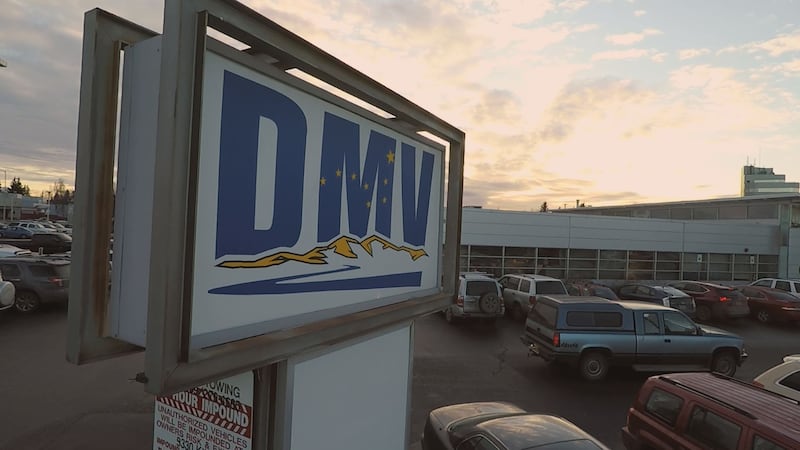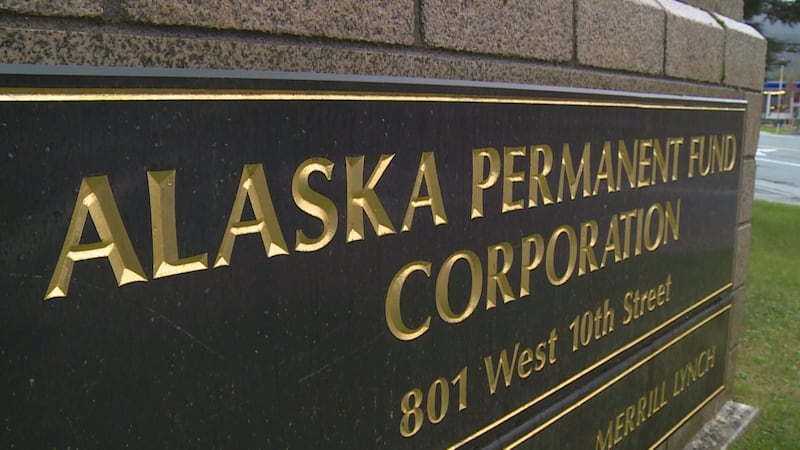Questions loom as LNG project sees renewed interest at home and abroad

ANCHORAGE, Alaska (KTUU) - The renewed push for the development of a new liquefied natural gas line in Alaska is prompting more heated debate over the future of resource development in the state.
Experts warn of a looming energy crisis in Alaska, including in Southcentral, where companies such as Enstar have previously cautioned consumers that a shortage of natural gas is imminent.
Alaska’s Congressional delegation has applauded progress of the proposed Alaska LNG Project thus far, with the state’s federal lawmakers responding earlier this year to the Trump Administration’s executive order promising prioritization of Alaska’s resource development potential and a secretary’s order from the Interior Department that is meant, in part, to “solidify the path forward” for the Alaska LNG Project.
“These are the first steps to restoring reasonable access to our federal lands and the federal government fulfilling the terms of our statehood compact from nearly 70 years ago,” Sen. Lisa Murkowski, R-Alaska, said last month. “All achieved by simply partnering with Alaskans and following the law.”
Sen. Dan Sullivan, R-Alaska, has echoed that sentiment, saying in part that the federal-level moves will, in general, “help us realize a future of wealth, sustainable private sector economic growth, and good-paying jobs for our working families.”
Still, there is some skepticism over the project, which has thus far been priced at more than $44 billion.
Alaska oil and gas analyst Larry Persily said the timeline for the potential project is a lengthy one, and not a quick return by any means. In an interview with Alaska’s News Source in early 2024, Enstar Natural Gas Company President John Sims said a shortage of natural gas in Cook Inlet could come as early as 2026, while estimates put the potential building of the pipeline itself at a five- to six-year endeavor.
“Realistically, even if there was a miracle and this thing could be pulled together, I don’t think that gasline could be operating for eight years,” Persily said. “Southcentral is going to need gas before then.
“The pipeline is much farther away than the utilities bringing in the small amounts of LNG that they will need,” he added, “to keep homes warm, businesses warm, and the lights on.”
At the same time, Gov. Mike Dunleavy, R-Alaska, has been touting a possible new LNG connection with Taiwan. The governor hosted a conference call from Tokyo last week, announcing a Taiwanese letter of intent for the potential purchase of LNG, though that letter is non-binding.
Despite that, Dunleavy wrote on social media the same evening that the agreement made for “a historic day for Alaska.”
“Oil was discovered in Prudhoe Bay almost exactly 57 years ago,” he wrote, “and since then, Alaskans have never given up on finding a way to also benefit from our North Slope natural gas. Alaska has made a significant investment to develop Alaska LNG to the point where we can engage Glenfarne, a well-qualified industry leader, to bring this great project to the finish line.
“Alaska LNG will strengthen the U.S. geostrategic position in the North Pacific,” he continued, “provide vital energy security for our residents, our military bases, our businesses, and our Asian allies, and unlock billions in economic benefit at home and abroad.”
Glenfarne Alaska LNG has taken on a 75% ownership stake in the potential project, according to the Alaska Gasline Development Corporation, the state agency that now holds a 25% stake via a subsidiary called 8 Star Alaska.
Dunleavy expressed gratitude in an additional social media post that also stated Taiwan’s letter of intent for gas amounts to about 6 million tons per year of LNG from Alaska, “including potential investment in the project itself.”
“I am looking forward to the fast tracking of final agreements with CPC of Taiwan and Alaska LNG as we begin work on this great project,” he wrote. “Thank you to CPC, the President of Taiwan Lai Ching-te, and the Taiwanese people.”
Lawmakers have also been speaking on the LNG proposal in recent days. On Tuesday, Sen. Cathy Giessel, R-Anchorage, called the LNG proposal “a mega project” and explained that AGDC was given “tremendous authority” when, at the time, the project was being led by ExxonMobil.
“They stepped away from this because of the cost,” said Giessel, who is also serving as Senate President this session. “We’re still operating under an estimate of $44 billion to build this project. That’s a very old estimate.
“I mean, when we’re talking about financial commitments, what has been committed through Glenfarne?” she said. “We have a very old analysis of what this mega project will cost, at $44 billion. We don’t know what the risk factors are. You know, 92% of these kinds of projects are either over time or over budget or both. So there’s a whole lot of questions that we need to ask.”
Reuters has also reported that Dunleavy is expected to brief the Trump Administration on the Alaska LNG Project as early as this week.
Groups such as Earthjustice have long opposed the potential development of an LNG line in Alaska. In 2023, the group alleged that the federal government had failed to “fully assess” the project’s potential impacts on the environment and filed a lawsuit against the U.S. Department of Energy that same year.
As of last check, the challenge to the DOE’s approval of exports was still pending, a spokesperson for Earthjustice said.
A challenge against the approval of a proposed terminal was decided in favor of the Federal Energy Regulatory Commission, the group said.
“Certainly, Alaska has been pushing the notion of North Slope liquefied natural gas to Asia for decades; what’s changed in the last 10 years is LNG’s demand worldwide is growing,” Persily said. “So, what you’ve seen in the last few weeks is Taiwan, South Korea, Japan wanting to avoid tariffs. They don’t want to become the next Canada or Europe or Greenland.
“Taiwan signed a non-binding letter of intent,” he added. “You don’t get much squishier than that.”
The announcement of an LOI with Tawain preceded a separate update from Furie Operating Alaska — also known as Furie — which said this week that it had reached a new lease agreement with Hilcorp Alaska subsidiary Hilcorp Jack-Up Rig Company to utilize what’s known as the Spartan 51 jack-up rig during this year’s drilling season. Furie was acquired by HEX Cook Inlet several years ago when the formerly Texas-based Furie filed for Chapter 11 bankruptcy and went to auction overseen by the courts. Current Furie president and CEO John Hendrix was the highest bidder and eventually acquired the company after securing purchasing rights.
A release made public by Furie on Tuesday said the company expects to begin drilling up to two new natural gas wells as early as mid-April, using the only jack-up rig in the state to do so. The company called the development “an important step forward by Furie and Hilcorp working together to produce more Cook Inlet natural gas for Alaskans.”
“We committed last year that if we received royalty relief, we would drill, and we drilled in 2024,” Hendrix said in the release, adding that the State of Alaska Department of Natural Resources approved a royalty relief application this past February, and that the company has committed to a $40 million drilling program for 2025.
“Drilling will allow new gas to be online for the Railbelt in advance of the 2025/2026 winter,” he continued. “Together with Hilcorp, we are demonstrating that Alaskans working together can develop more critically needed energy from the Cook Inlet basin.”
Spartan 151 is a cantilevered jack-up rig that can drill to approximately 25,000 feet and operate in water depths of up to about 150 feet, according to Furie and a spec sheet from Enterprise Offshore Drilling, which previously held a contract for work with Hilcorp in Cook Inlet. Hilcorp purchased the rig for itself last May “to help ensure the only jack-up drilling rig in Alaska did not leave the state at a critical time for natural gas development,” the company said. Hilcorp allowed Furie to use Spartan 151 to drill a new gas well in the Kitchen Lights Unit last year.
According to the March 31 release distributed by Furie, the company is the second-largest operator in Cook Inlet behind Hilcorp and currently produces about 7% of the natural gas in Cook Inlet, though recent data – including numbers provided by HEX Cook Inlet at a January 2025 presentation to the Senate Finance Committee – also has that figure at approximately 5%.
The same release said the drilling program should “allow Furie to increase its production and meet its goals of bringing online more locally-produced gas for Alaska.”
However, in an email from Furie to Alaska’s News Source on Thursday evening, Hendrix, the Furie CEO, disputed the above percentages. Rather than backing the 7% production figure shared in a Furie press release Monday, he pointed to a different outlet stating the company now accounts for approximately 7.5% of the natural gas produced in Cook Inlet.
“We are continually working and spending money to increase gas to Alaskans,” Hendrix wrote in part. “No other production company or utility in Alaska is doing a 50% increase.
“We will be bringing a jack-up rig to drill 2 wells starting in April,” he continued. “If successful, we hope to be over 12% of Cook Inlet production.”
Author’s note: This story has been updated with additional information, including a portion of a statement sent by Furie to Alaska’s News Source after the initial publishing of this article.
See a spelling or grammatical error? Report it to web@ktuu.com
Copyright 2025 KTUU. All rights reserved.













